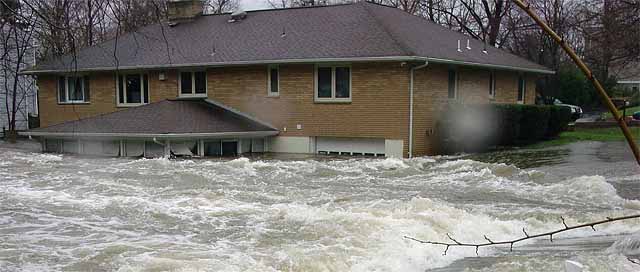The National Emergency Management Agency (NEMA) has reiterated its earlier advice to states and local governments to immediately relocate residents of communities along rivers, waterways and flood-prone areas to safer grounds to avoid unnecessary loss of lives and property. The agency anchored the warning on expert predictions of impending heavy rains and devastating floods.

This is not the first warning from the agency this year. It had alerted of plans by Cameroun to release water from its Lagdo Dam. Based on this, NEMA had warned “all those living around the Dam and along River Benue in Garoua up to (the) Nigeria side to be alert and ready for evacuation in case of possible flooding”. It also advised states and relevant authorities to alert the communities at risk and prepare safe locations for possible evacuation of those to be affected.
As expected, that alert has created panic among Nigerians as it served as a reminder of the tragic incident of 2012 when water released from the Lagdo Dam triggered off a massive flood that devastated many communities in some North East and North Central states of Nigeria, claiming several lives and rendering hundreds homeless.
The states considered vulnerable to release of water from the dam are Adamawa, Taraba, Gombe, Bauchi, Benue and Kogi. Information from the Federal Ministry of Environment also has it that flash floods could be experienced in some urban locations such as Lagos, Port Harcourt, Sokoto, Birnin Kebbi, Ibadan and other towns along the country’s coastline.
Also, the Lagos State Emergency Management Agency, LASEMA, has warned occupants of flood-prone areas in the state to vacate the areas and move to safer places to avoid loss of lives and properties. The areas include Ajegunle/Owode-Elede, in Agboyi Ketu; Ijora/Badia, Apapa/Iganmu, Aradagun in Badagry, Jakande area in Eti-Osa, and Alimosho Local Government Area.
It is curious that NEMA’s flood warnings and directives usually fall short of concrete arrangements to ensure that those to be evacuated are adequately accommodated and catered for as internally displaced persons.
Since most people who live in flood-prone areas belong to the lower economic strata of society, government must create temporary shelters where people can evacuate to in times of disasters. It is one of the social responsibility functions of government to provide help and succour to its vulnerable citizens. The federal government disburses huge amounts of money from the Ecology Fund every year which are hardly accounted for, yet flood victims are told to evacuate without any form of assistance.
Flood victims are internally displaced persons and steps must be taken to cushion the effects of flood disasters on hapless citizens. These flood warnings must be taken seriously to avoid unnecessary loss of lives.

0 comments:
Post a Comment